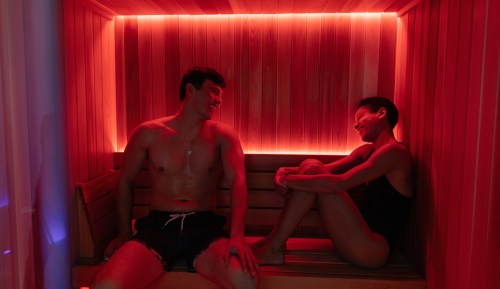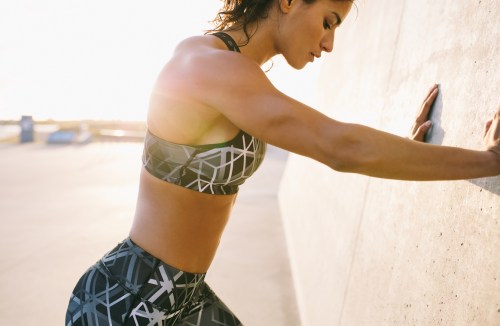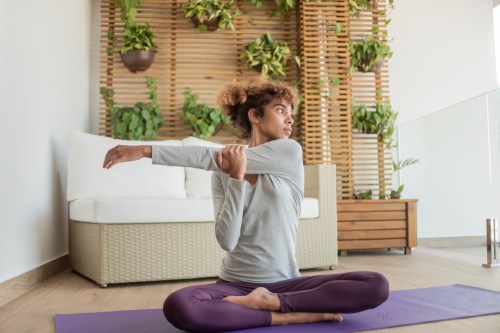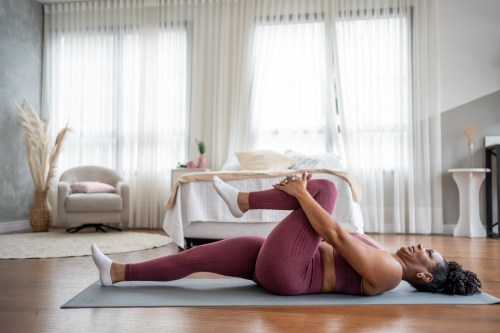If Your Body Is Aching From Walking More Than You’re Used to, These Stretches Can Help
A physical therapist recommends the stretches to do after walking that will help your muscles recover from all those steps.
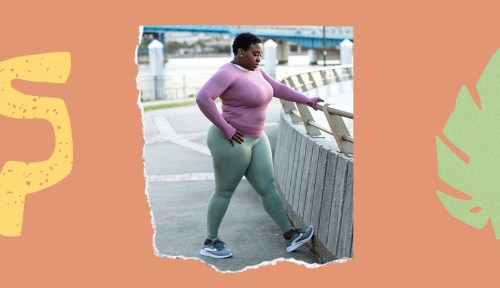
Summertime is almost here (finally!) and that means more daylight, and more time outside. Whether you’re able to take a vacation or are just happy to get out of the house more often, most of us find ourselves walking a lot more than usual. When the sun is shining, our plans are more likely to take us into the great outdoors—on hikes, during shopping and sightseeing trips, and even just schlepping along the shore to find that perfect spot on the beach.
Experts in This Article
board-certified specialist in orthopedic physical therapy and owner of More 4 Life PT
Summer walking is fantastic for your body, but if you have a sudden uptick in your physical activity level, you may find your legs and feet aching and screaming. To help keep your muscles from getting creaky after all those extra miles, we reached out to Dave Candy, DPT, a board-certified specialist in orthopedic physical therapy and owner of More 4 Life PT.
Which muscles are crying out for a good stretch?
Dr. Candy says the calves and glutes are the main drivers of the walking stride, since they’re the muscles that propel the body forward during push-off. The hip flexors also help with the swing portion of the stride, when your leg is off the ground.
Also, your hip abductor muscles on the outside of your hip “help keep your body balanced in a side-to-side direction when standing on one leg,” Dr. Candy says. And while walking on flat ground doesn’t require a lot of effort from the quadriceps muscles, “the demand on the quads goes up if you’re walking hills or walking up stairs.”
Finally, muscles in the shin, ankle, and foot work together to allow an appropriate amount of pronation of the foot.
The two best stretches to do after walking
After a long day of building up that step count, stretching can help your body recover. As physical therapist Corrine Croce previously told Well+Good, stretching after any kind of exercise can “reduce stiffness and shortening in the muscles that were working, increase blood flow, and…assist in clearing waste by-products that accumulate while we work out.” Setting aside even just a few minutes at the end of a long day of walking will help you reduce tension and maintain mobility.
Dr. Candy says the most important muscles for walkers to stretch are the calves and hip flexors. That’s because if your calves aren’t flexible enough to allow your toes to sufficiently bend toward your shin as you take a full stride, “your body will find an alternate path around your foot, which usually results in overpronation,” he explains. “Likewise, if you can’t get your leg behind you when pushing off by extending at your hip, it can cause your lower back to arch, which then can create back pain when walking.”
Calf stretches
- Stand facing a wall with both feet pointing toward the wall.
- Step forward with one leg and keep the leg that you’re stretching behind you with the heel flat on the floor.
- Keep the arch of the back foot domed—don’t allow the foot to flatten or rotate inward.
- Hold for one minute, then repeat on the other side.
Hip flexor stretch
- Kneel in a lunging position with the knee of the leg you’re stretching on the ground and the other foot forward.
- Roll your pelvis underneath you to keep your lower back flat.
- Push your pelvis forward until you feel a stretch in the front of the leg that’s on the ground. Don’t allow your lower back to arch. (You’ll be surprised how quickly you feel a stretch if you keep your lower back in a neutral position.)
- Hold for one minute, then repeat on the other side.
Watch trainer Traci Copeland demonstrate this stretch at minute 2:03 in this video:
Cross-train with these six strengthening exercises for walkers
Just like in the rest of life, a proactive approach will serve you best. If you prep your body to handle extra walking this summer by not only stretching, but also strengthening the muscles you’ll be using to take those steps, you won’t find yourself as sore at the end of the day. Dr. Candy recommends the following:
Single-leg balance
Dr. Candy says this simple exercise is actually one of the best to prep your body for walking. “It strengthens the hip abductor muscles, which can prevent falls in older adults as well as prevent back, knee, and hip pain when walking in people of all ages,” he explains.
- Stand upright with good posture, engage your core and glutes, and then stand on one leg for 30 seconds.
- Try not to hold on to anything, but stand nearby something you can grab just in case.
Heel raises
While many people are familiar with heel raises, Dr. Candy says we often perform them incorrectly. “It’s important to keep your heel and Achilles tendon vertical and not allow the heel to twist out (pronate) or twist in (supinate) too much,” he says.
- Stand with one or both heels hanging off a stair.
- Drop your heels and then come up onto your toes, being sure to keep your heels straight rather than rolling the ankle in or out.
- Complete 20 reps with both feet together, or 12 to 15 with each leg individually.
Arch doming
By using the small muscles in your foot to slightly curl your toes and form an arch with this exercise, you can help prevent over-pronation, which is a common problem. “It can also be combined with balancing on one leg in order to save time as well as make it more difficult,” Dr. Candy says.
- Stand upright in bare feet, curl your toes under, creating a “C” shape with your foot, accentuating your arch.
- Hold for a few seconds, then relax and repeat.
- Complete 12 to 15 reps per foot.
Lunges
Lunges, like squats, are one of the classic exercises for strengthening the glutes and the quadriceps. However, Dr. Candy believes lunges are superior to squats for walkers and runners because the load is primarily on your front leg. “Lunges allow the hip abductors and hip rotator muscles to get strengthened at the same time,” he explains.
To maximize the strengthening benefits of lunges and prevent knee pain, Dr. Candy advises keeping your weight in your heel and keeping your knee aligned with your toes. “When your weight is more on your heel than the toes, it uses your gluteus maximus muscle more than your quads. Additionally, keeping the knee from falling inside (the most common mistake) or outside of the toes also helps strengthen the hip abductors,” he says.
Make sure you’re doing your lunges the right way to get the most benefit:
Single-leg mini squats
Although single-leg mini squats strengthen some of the same muscles worked with lunges, the exercises target these muscles somewhat differently. According to Dr. Candy, “Single-leg mini-squats require more balance to control the leg so they typically help strengthen the hip abductor and hip rotator muscles more than lunges, but the gluteus maximus not quite as much.”
- Stand upright with good posture, and engage your core as you lift one leg off the ground.
- Bend your knee and hip on the supporting leg as you sit back into a squat, going only as deep as you can handle.
- You can gently hold onto a surface for balance, but try to use your supporting leg to stand back up—don’t rely on your arms.
- Complete 10 to 15 reps per side.
Heel walking
Walking on your heels with your toes up may look funny, but it can help strengthen the tibialis anterior muscle in the front of the shin. “This helps ensure that you lift your toes up properly when swinging your legs through, so they don’t drag on the ground and trip you,” says Dr. Candy. This exercise can also help keep your foot from “slapping” down on the ground and can help absorb shock. Ultimately, this may help prevent shin splints, a common and sometimes debilitating injury in walkers and runners.
- Keeping your core tight and your posture tall, walk on your heels for 30 to 50 meters and then walk back.
- Repeat two to three times.
Additional tips for safe summertime walking
Build up your mileage slowly: Increasing your activity level too rapidly can cause injuries. “After the winter, many people have cabin fever and are motivated to get outside, and start a walking routine,” Dr. Candy says. “However, if you start walking too much too soon, you may cause an injury that keeps you from walking as much as you’d like the rest of the summer.”
Drink lots of water: You sweat more than you think. Staying properly hydrated can help your muscles recoup.
Get enough sleep: The body needs to recover from extra activity. Practice good sleep hygiene with a consistent sleep routine to optimize your rest.
Eat nutritious foods: Your body needs nutrients like protein, vitamins, minerals, and sufficient energy to repair tissues after exercise.
Don’t ignore pain: “If you have a pain that’s more than just an ache, or if it’s nagging and doesn’t seem to be going away, see a physical therapist to get it checked out and find out what you can do to walk more safely,” advises Dr. Candy.
You’ve likely heard the phrase, “Every body is a beach body,” right? Still, navigating the summer can be challenging. This week, Well+Good is publishing All Bodies Are Beach Bodies—A Realistic Guide to Preparing for Summer to help you hold on to your confidence, embrace joyful movement, manage sweat, make meaningful memories, and find major swimsuit inspiration all summer long.
Sign Up for Our Daily Newsletter
Get all the latest in wellness, trends, food, fitness, beauty, and more delivered right to your inbox.
Got it, you've been added to our email list.
